If iPhone 6 or 6 Plus bends, it's YOUR fault

Aluminum is a soft metal. Anyone who has used tinfoil to wrap up food should know this. As such, there are ways you really shouldn't handle a personal device made of the metal. Front or back pocket is a no-no without a case, at least. Better: Not at all -- or use a plastic phone made by Motorola, Nokia, or Samsung.
That's my short response to colleague Mihaita Bamburic's analysis: "If your iPhone 6 or 6 Plus bends, it's Apple's fault" He is "inclined to believe that Apple did not thoroughly test its new devices, based on my engineering background". You read that right. Mihaita may be a prolific writer, but his real profession is engineering. I trust his judgment but nevertheless disagree. If iPhone 6 or 6 Plus bends, it's your fault.
BlackBerry Passport aims for longevity with 30 hour battery life

Whenever news comes from BlackBerry it feels like a voice from the past calling. Today is no different as the company announces the launch of the BlackBerry Passport, a square-screened phone designed with the corporate market in mind. This might be a phone aimed at business users, but that doesn’t mean there isn’t room for a little joking around: CEO John Chen quipped that the Passport is harder to bend than the iPhone 6 Plus.
The most striking feature of the handset is the 4.5 inch display with its 1400 x 1400 resolution with 453PPI, but nestling beneath this is the Passport's second most interesting feature: the three-line, touch-enabled physical keyboard.
Pricey Macs and cheap Chromebooks squeeze Windows in the middle
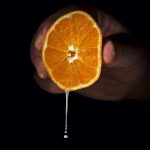
No one likes to be in the middle seat on airplanes, right? It's a metaphor appropriate for retail -- and the place where Windows sits in NPD's final assessment of U.S. 2014 back-to-school sales growth. Chromebook continued a nearly two-year unit-sales surge, while Macs made last-minute gains, and Windows PCs survived only by aggressive tactics that pulled down average selling prices. For Microsoft and its partners, the strategy cut market share losses but at great hidden costs.
Back-to-school 2013 was a bloodbath, with unit sales through U.S. channels dropping by 2.5 percent annually -- a loss that pulled down overall PC sales during first half of last year. For 2014, sales are up about 3 percent overall, or 3.5 percent for notebooks and flat for desktops.
Flushed and crushed -- the most popular ways to damage your iPhone

By virtue of the fact that we carry them around most of the time, mobile phones often get damaged and the iPhone is no exception. Insurance company Protect Your Bubble has analyzed its customer data to reveal the most common ways in which iPhones suffer problems.
Cracked screens are, as you might expect, the most common type of damage on 41 percent. Water damage accounts for 24.4 percent, though unfortunately no details are given on how this occurs or the exact nature of the liquids involved. We'd guess toilets are a factor in quite a few and Protect Your Bubble says it has had calls about phones damaged in Ice Bucket Challenge related incidents. It seems a high number of people manage to completely destroy their phone by smashing it into pieces too with nine percent admitting to running over their phone with a heavy object.
If your iPhone 6 or 6 Plus bends, it's Apple's fault
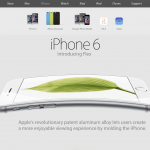
Apple could have a huge problem on its hands if iPhone 6 and iPhone 6 Plus are susceptible to bending. According to some early adopters, the new iPhones can show visible signs of damage after only a few days of normal use.
That's because the build quality does not appear to stand up to the challenges posed by pants' front pockets, which are causing the metal shells to bend near the cutouts for the physical side buttons. Light metal shell, meet thin profile.
Five things to love about the iPhone 6 and iPhone 6 Plus
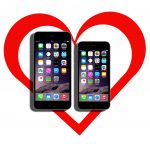
First in a series. Now that the initial excitement surrounding the launch of the new iPhones has calmed down, most of us new iPhone owners have had a chance to play around with our new devices a bit.
So what’s there to love about the iPhone 6 lineup? What do we hate? In this first article we’ll take a look at the positives. No doubt, ten million phones sold over the weekend indicate that most consider this a significant step forward for the iPhone itself, so I think it’s only fair to you and Apple to wax poetic about the good things first. Note this is not a review, but more just musings on the device itself. Every tech publication known to man has already written how "game-changing" and "revolutionary" it is, so here we’re going to give equal time to both the fanboys and naysayers. Both camps have valid points.
The new iPhone 6 recharges in under two minutes in the microwave*
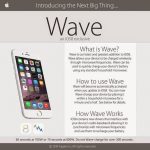
Apple’s iOS is an amazing operating system. When iOS 7 came out last year, people were thrilled to discover it made their iPhones waterproof. And iOS 8 is no less magical, as it comes with a new 'Wave' feature which lets users recharge a phone in just two minutes, simply by microwaving it.
Of course, neither the waterproofing nor the new super-quick charging feature is true, it’s just a practical joke spreading across the internet, but some poor fools could well fall for it.
Apple: Beats Music to live on, could be swallowed by iTunes

When Apple acquired Beats Music earlier in the year, there were obvious fears that the service would shut down. While this type of rumor is often well-founded, it seems fears were misplaced on this occasion: Apple has no plans to shutter Beats Music. A company spokesperson made a statement to the Guardian making it clear that suggestions that the subscription music service is to close down are "not true". But could the brand end up being eaten by iTunes?
Beats Music has not been a runaway success. It has subscribers, but not all that many. With Apple's backing there is a chance that its popularity could increase, but it can be difficult to shake off the reputation of an old name -- Beats Music has singularly failed to reach the celebrated heights of Beats Electronic's headphones. Having spent $3 billion on Beats Music and Beats Electronic, it would be strange if Apple just gave up on a portion of its investment.
The global supply chain behind the iPhone 6

We all know that the majority of our technology gadgets are produced in China, but the supply and manufacturing process isn't quite as simple as it might appear.
Apple more than most is a master at using the supply chain to its advantage, sourcing suppliers that can turn out parts in the most cost effective way whilst still adhering to the company's quality requirements.
Adobe snaps up cloud image editor Aviary to fast-track SDK development

Seven years after its inception, online image editing service Aviary has been acquired by Adobe. The Photoshop stalwart is no stranger to the cloud, but this latest purchase seems to indicate that the company is looking to expand further in this arena. Pay a visit to the Aviary website and the Adobe branding is already in place -- there's also a new entry on the Aviary company timeline that has been updated to reflect the acquisition. The Adobe-branded Aviary website makes clear the thinking behind the move: "accelerating delivery of mobile apps that integrate with Adobe Creative Cloud".
It seems that the main reason for Adobe's interest in Aviary is the fact that the ornithologically-named firm has developed a number of mobile SDKs. Aviary is already a popular tool, and Adobe is understandably keen to monetize the popularity of cloud apps and mobile services: Aviary is a ready-made package that encompasses both of these ideas perfectly. An announcement by Adobe explains that "the acquisition accelerates Adobe's strategy to make Creative Cloud a vibrant platform for third-party apps, through a new Creative SDK".
Apple iPhone 6 Plus has the best smartphone LCD display, but Samsung Galaxy Note 4 still reigns supreme

The good news keeps on coming for Apple. After it announced that iPhone 6 and iPhone 6 Plus sales exceeded the 10 million units mark, therefore breaking the previous record established last year, DisplayMate, a company dedicated to testing the quality of displays, has proclaimed iPhone 6 Plus as having the best LCD screen that has ever crossed its labs.
Apple's other new flagship, the smaller iPhone 6, has also registered impressive results, but its 4.7-inch panel is let down by the low resolution of just 750 by 1,334, which is inferior to that of its bigger brother -- which boasts a 1,080 by 1,920 resolution with its 5.5-inch panel -- as well as competing flagships from other manufacturers.
Product rumors are Apple's best friend

Apple's longstanding perchant for secrecy is legendary. It's also a myth. Granted, the company has a strict no-comment policy about future products, which isn't so much about keeping information from seeping out but controlling who disseminates it. Something else: Secrets are impossible to keep when a company produces physical products overseas and depends on so many third-party suppliers. Controlled leaks, or strictly managing those that aren't, lets Apple maximize marketing advantage.
The value cannot be understated, because Apple's business model in 2014 isn't much different from 2001 or 1995: Reselling to the same core group of loyal customers. The Mac faithful mattered when the company struggled to survive against the Intel-Microsoft duopoly and made the majority of profits from selling computers. Cofounder Steve Jobs wisely chose to expand into new product categories -- iPod (2001), iTunes Music Store (2004), iPhone (2007), iPad (2010) -- that freed Apple from monopoly bondage. But the core philosophy of selling to loyal customers, even while trying to grow their numbers, remains the same.
iPhone 6 is Apple's least breakable iPhone to date
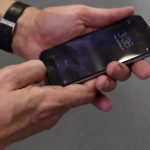
Apple makes gorgeous looking and highly desirable products, but unfortunately for buyers, the iPhone and iPad are among the most breakable devices in the world. Back in February, SquareTrade tested a bunch of gadgets, and rated the iPad mini as the most breakable, with the iPad Air in third place, the iPhone 5c in fifth, and the iPhone 5s in eighth.
It was hoped by many that Apple’s new phones would have sapphire crystal screens, but in the end the tech giant went for ion-strengthened glass. There’s good news for Apple users though, and that’s new breakability tests conducted by SquareTrade show the new devices are Apple’s least fragile to date.
Apple only manages to sell 10 million iPhone 6 and 6 Plus in opening weekend

Expectations always run high when it comes to sales of new iPhones during launch weekend. There's an incredible frenzy in the media fueled by loyalists, long lines form outside Apple stores (immediately followed by the first inadvertent drop caught on camera), the reviews are raving across the board (and why wouldn't they be when only loyalists get review units?) and, finally, on Monday, Apple gives its fans the much-awaited reason to celebrate -- a new first-weekend sales record.
Needless to say, the 10 million iPhone 6 and iPhone 6 Plus units that Apple managed to sell during the first weekend exceed the 9 million iPhone 5s and iPhone 5c units sold a year ago. Barely. Considering the appeal that larger iPhones seem to have -- we've been waiting for them for a couple of years, after all -- 10 million sounds a tad short. It really does.
iPhone 6 is much more popular than the 6 Plus
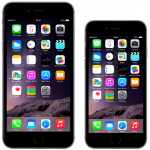
Phablets might be increasing in popularity globally, but iPhone users aren’t blown away by the idea of carrying around a giant phone, if early adoption data is to be believed.
Although it’s very, very early days for Apple’s new handsets, the iPhone 6 is already proving to be a much more popular draw than the giant iPhone 6 Plus, although as my colleague Joe Wilcox points out in his 10 things you should know before buying iPhone 6 or 6 Plus article, limited stock means the 6 Plus is already sold out in a lot of locations, which will obviously have an impact on the number of people who own one.
Recent Headlines
Most Commented Stories
BetaNews, your source for breaking tech news, reviews, and in-depth reporting since 1998.
© 1998-2025 BetaNews, Inc. All Rights Reserved. About Us - Privacy Policy - Cookie Policy - Sitemap.